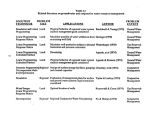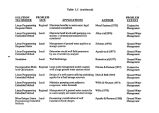| OCR Text |
Show As was stated earlier, the reservoirs are numbered sequentially from upstream to downstream. The simulation algorithm then initiates with the first reservoir and proceeds downstream. For reservoirs that have no reservoirs upstream of them no modifications are necessary in the simulation procedure. For reservoirs that have one or more reservoirs upstream, and/ or demand areas that send return flows to a stream section upstream of the reservoir, modifications to preserve monthly mass balances are necessary. These modifications apply primarily to the computation of the total monthly inflow QIst into the reservoir for each month, as the sum of the local natural inflow Qst ( defined as the reach gain between the upstream reservoirs and the reservoir in question), the hydro releases from the upstream reservoirs, the spills from the upstream reservoirs, and the return flows from M& I and irrigation demand areas. If the reservoir receiving these flows is an off-stream reservoir the total inflow definition is further qualified by the fraction of flow Xs's diverted from an upstream reservoir s' to the reservoir s. The definition of QIst may then be stated as: s R st- NL s <$*-% + X art< « rtH, + RErt) • XXXXk. mb, mPL, Km' s'= l r= lm'* lt'= ts'= l R IUs,- NLUs + S S X I * t < Vr 4 Cr < 5- 28> r= l i' « l t'= ts'= l where Qst is the local inflow into reservoir s in time period t ( defined as the incremental reach gain/ loss between an immediately upstream reservoir s' and reservoir s), Us is the number of reservoirs upstream of s, MUS is the number of M& I demand areas with return flows influent into the reservoir s, IUS is the number of irrigation demand areas with return flows influent into the reservoir s, NL is the number of months of lag considered for return flows from diversions, 9S'S is the fraction of the upstream releases reaching a reservoir s' ( after reach losses and gains) to reservoir s ( defined as 1- ZZ Xsz, for a reservoir s on a principal stream, and as Xss' for a reservoir s on a diversion from reservoir s'), kt'm is a factor for return flow from M& I area m for month t ( contributed from t' previous months of M& I supply to area m), and gt'j is a factor for return flow from irrigation area i for month t ( contributed from t' previous months of irrigation supply to area i). With this modification, the simulation procedures described in sections 5.3.1 and 5.3.2 may be conducted one reservoir at a time, proceeding from upstream to downstream, to determine the active and total storage capacities, the generator size and the net revenue from hydropower at each site. The determination of flood control benefits ( section 5.3.3) at each site can be similarly modified by considering flood routing between the reservoirs, given the candidate value of flood storage at each site specified by the optimization model. For our applications this was not necessary, since as indicated earlier, the flood control benefits for Great Salt Lake level control are defined in terms of the volume of flood storage provided. 117 |











































































































































































































